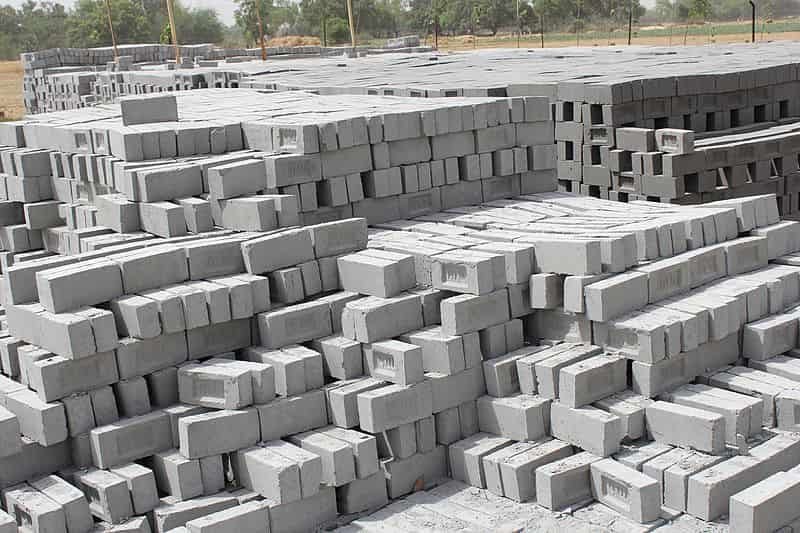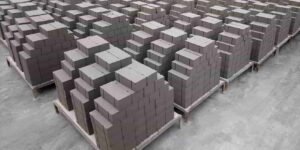Table of Contents
Embarking on a construction journey? Cement bricks might just be the solution you’re looking for. Renowned for their durability, strength, and economic advantages, these bricks have become a preferred choice in the construction realm. Before commencing your project, let’s address the ten most commonly asked questions about these robust building materials.
What are Cement Bricks?
Cement bricks are crafted from a blend of cement, sand, and water. This concoction is molded into a brick shape and meticulously cured under controlled conditions. Recognized for their high compressive strength, minimal water absorption, and lasting resilience, these bricks come in diverse sizes and shapes, catering to a myriad of construction needs.

Why Choose Cement Bricks?
The perks of opting for these bricks are manifold. Firstly, their exceptional strength and durability make them ideal for structures facing challenging weather conditions. Secondly, boasting a low water absorption rate, these bricks resist cracking and deterioration over time. Thirdly, their cost-effectiveness, when compared to alternatives like stone or clay bricks, makes them a budget-friendly choice. Lastly, their ease of use renders them versatile for various construction projects.
What are the different types of cement bricks?
The world of cement bricks isn’t one-size-fits-all. It includes solid bricks, hollow bricks, and cellular or aerated bricks. Solid bricks, made from solid cement, coexist with hollow bricks, which feature a lighter, hollow center for ease of handling. Meanwhile, cellular or aerated bricks, with air pockets enhancing their insulation properties, offer a lightweight alternative in the brick landscape.
Difference between cement bricks and clay bricks?
Cement bricks and clay bricks share the commonality of being construction materials, yet nuances set them apart. These bricks derive from a blend of cement, sand, and water, while clay bricks emerge from molded clay subjected to kiln firing. These bricks showcase superior strength and durability, while clay bricks excel in heat and sound insulation.
How are these bricks made?
The birth of these bricks involves a meticulous process of mixing cement, sand, and water within a mold. This mixture undergoes controlled curing, ensuring proper drying and hardening. Post-curing, these bricks stand ready for integration into diverse construction projects.
How do you use these bricks in construction?
Cement bricks find application in diverse construction endeavors, including wall construction, foundation building, and outdoor structures. Integrating them into your project involves determining the desired size and shape, preparing the surface, applying mortar, laying the bricks, and filling any gaps with additional mortar.
How do you maintain this brick structures?
While relatively low-maintenance, this brick structures still demand attention. Regular inspections for cracks or damage are crucial. Immediate repairs prevent further deterioration. Routine cleaning, removing accumulated dirt or debris, ensures the longevity of cement brick structures.
What is the cost of cement bricks?
The cost of these bricks hinges on factors such as size, shape, material quality, and purchase location. Generally, they prove more cost-effective than counterparts like stone or clay bricks, making them an economical choice for conscientious builders.
Where can I buy cement bricks?
These bricks are readily available from multiple outlets, spanning hardware stores, building supply shops, and online retailers. Before purchasing, compare prices and quality across different sources to secure the best deal for your construction needs.
Can these bricks be recycled?
Bid farewell to old cement bricks by embracing recycling. Once their utility expires, crushing them provides a base material for new construction projects. This eco-friendly approach not only disposes of unwanted bricks but also contributes to waste reduction.
Conclusion:
Cement bricks emerge as a versatile and economical building material, finding utility across a spectrum of construction projects. Armed with this comprehensive understanding, you’re empowered to make informed decisions, ensuring these bricks align seamlessly with your construction aspirations.
The cement brick making machine is a technological marvel in the field of construction. This sophisticated piece of equipment revolutionizes the traditional brick-making process, streamlining it with efficiency and precision. Operating on advanced principles, these machines automate the production of these bricks, significantly reducing manual labor and expediting the overall construction timeline. Equipped with the ability to mold bricks in various sizes and shapes, these machines ensure consistency and quality in each production cycle. The brick making machine stands as a testament to the synergy of technology and construction, offering a sustainable and scalable solution for modern building needs.




Useful info! If you’re looking to learn more about cement bricks, check out Chettinad Cement Dealers in Salem.